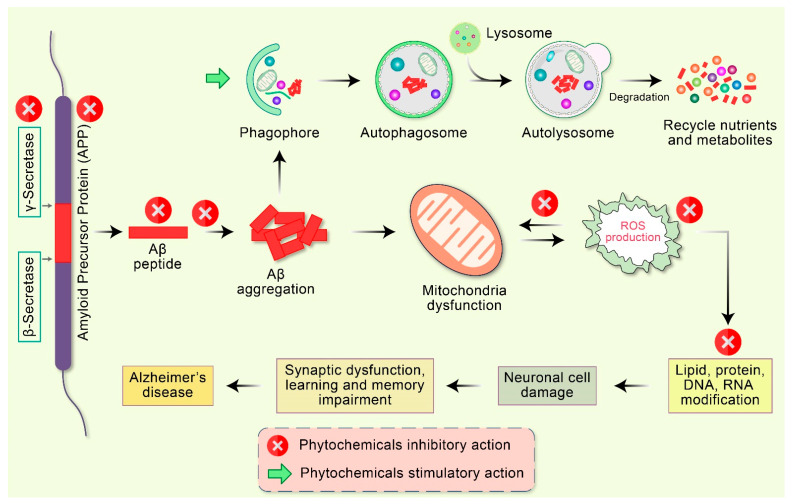Figure 4.
Emerging potential therapeutic targets of phytochemicals in mitochondrial dysfunction and AD pathogenesis. Abnormal APP is proteolyticlly cleaved by β- as well as γ-secretase leading to the accumulation of extracellular amyloid-β (Aβ). Deficient clearance of Aβ or Aβ production increases aggregation, leading to the accumulation of a diversity of Aβ assemblies. Accumulation of Aβ directly interrelates with mitochondria as well as ROS generation with different intracellular pathways. These oxidative stress reactions lead to the impairment of neuronal synapses and dendrite function with multifactorial mechanisms, in addition to neurological degeneration and dysregulation of synaptic function in the regions of the brain implicated in learning and memory impairment in AD. Additionally, Aβ aggregates are degraded by autophagy via the stimulatory action of phytochemicals.

